Binghamton, NY, seat of Broome County, NY
Population 48,000
Peak population 81,000 in 1950
Former home to Endicott Johnson (shoes), major IBM plant
Now home of Binghamton University
Housing/Income ratio: 2.4 (10 of 384)
+0.46% net international migration, -1.37% population growth 2020-2023
78% white, 11% black, 6% hispanic
Severe flood, Moderate fire, Minor wind, Minor air, Moderate heat (4,2,1,1,2)
(Major flood in 2011.)
Binghamton held a place in my mind for years as “that city I didn’t go to”. When I was in high school, SUNY Binghamton – now Binghamton University – was the best of the NY state schools, the school I hoped to be accepted at if I didn’t get into my first choices. I got into Williams, moved to western MA and didn’t think about Binghamton for years until I started passing through on my various “rustbelt rambles”.
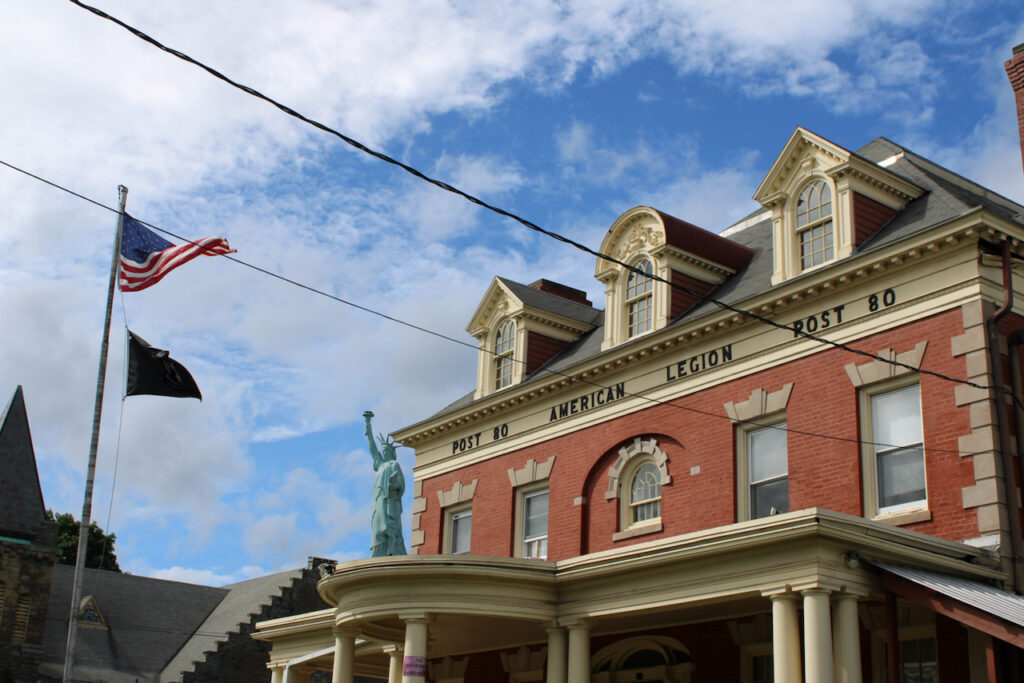
The American Legion, west Binghamton, NY
The main thing I noticed on those brief visits are the massive mansions in the city’s downtown, at least one available for fire-sale prices, if you happened to have thousands of spare hours to fix the place up and a huge family to fill it. I learned today that Binghamton has been called “The Parlor City”, referring to the opulence of private homes built with revenues from the many manufacturing activities that took place in the city in the mid to late 1800s. Located on a navigable river connected to the Erie canal in 1837 and to rail in 1849, Binghamton manufactured a little bit of everything: cigars, sleighs, carriages, washing machines, leather tanning.
The Phelps Mansion, now open as a history museum, was built in 1870 for Sherman Phelps, a businessman, banker, judge and mayor of the city. When constructed, the mansion was part of a whole row of opulent houses, owned by the manufacturing and financial elites of the time, but those mansions decayed as that first era of Binghamton’s manufacturing waned. The Phelps Mansion survived by becoming the clubhouse for prominent local ladies, who invited speakers like Amelia Erhardt to share with the local community. It remains an active community center, as well as a museum – there was a lively stage magic camp for elementary school children in the ballroom when I came by today.
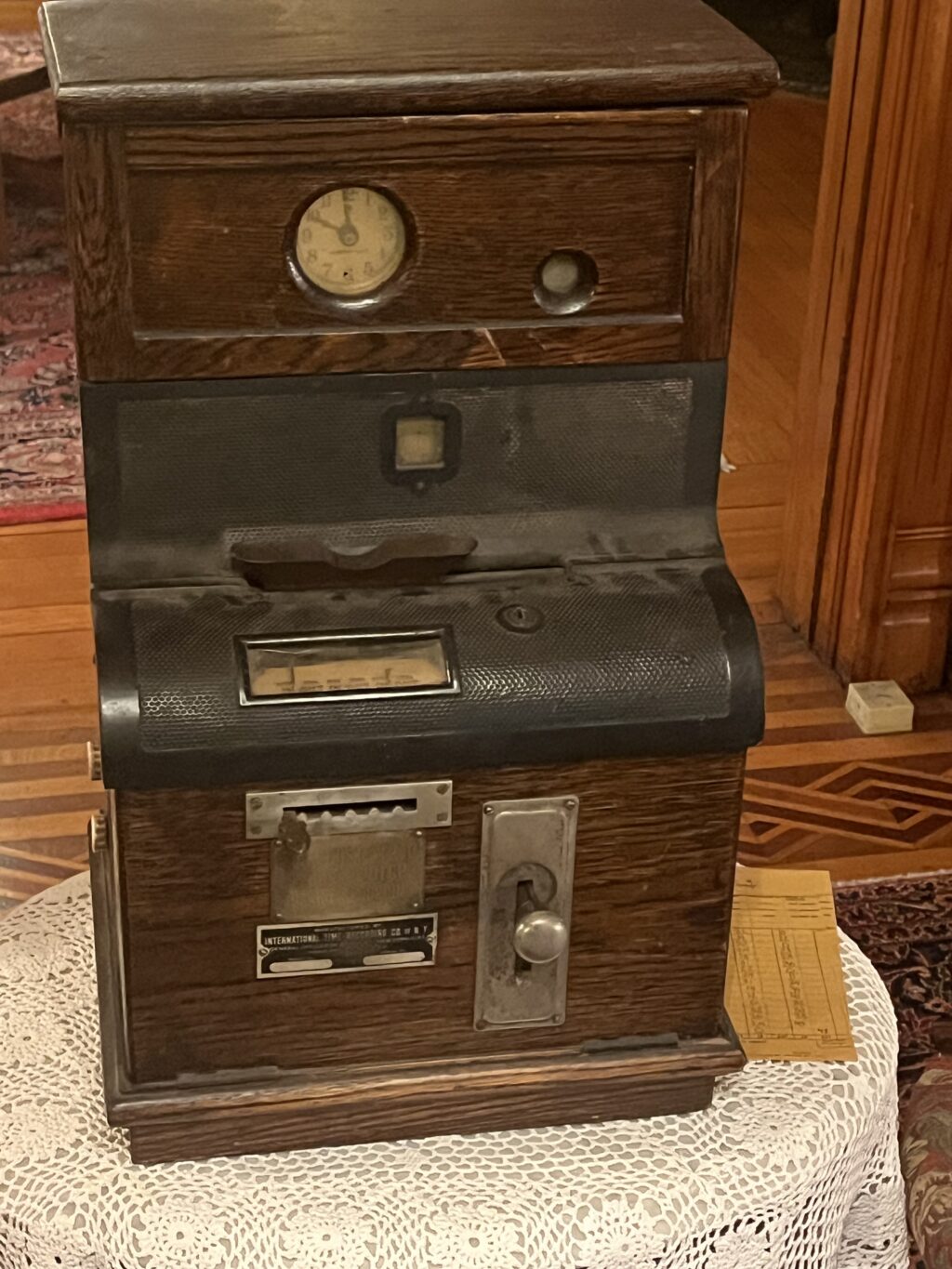
The mansion that captured my attention, though, was the home of Harlow Bundy, the elder of two brothers who created a manufacturing company that was, arguably, the direct precursor to IBM. Harlow’s brother Williard was a brilliant jeweler and invented a clock that could keep track of when employees came to work. Harlow saw the potential of the invention and brought his brother to Binghamton, where there were skilled manufacturers who could scale up production. The two built the Bundy Manufacturing Corporation, which morphed into the Simplex Time Recorder Company, which was a major building block in International Business Machines, which was initially headquartered in Binghamton. Unfortunately, the brothers fell out in a dispute over patents and briefly had rival timekeeping companies.
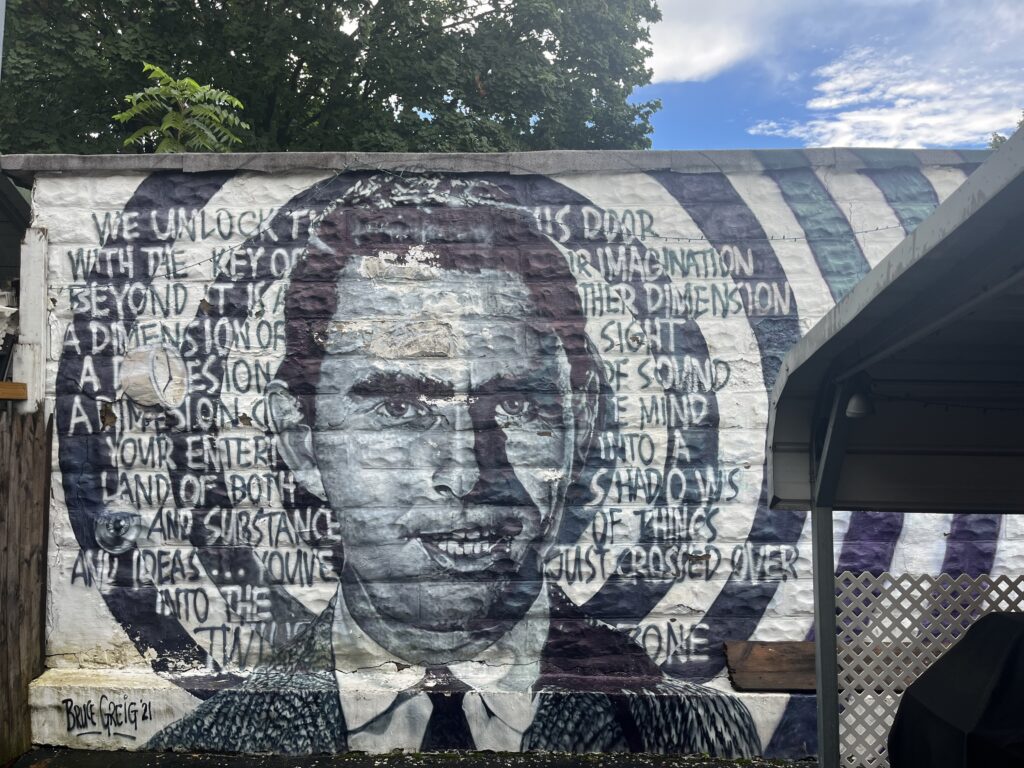
Mural of Rod Serling at the Bundy Museum
Harlow’s mansion and nearby homes have been turned into a fantastic showcase for art and objects of Binghamton’s past and present. Walk through a gallery of early timeclocks, which show a remarkable range of methods to ensure employees showed up to work on time, and you’ll discover a shrine to Rod Serling, screenwriter and producer of The Twilight Zone. (Serling lived nearby in his childhood.) The top floors of Harlow Bundy’s mansion are given over to galleries for local painters and photographers, and the complex as a whole houses a radio station, a darkroom, a coffee shop (filled with the fixtures of a local barber shop) and a small live music venue. It’s the passion project of a local antique collector and other Binghamton boosters, and it’s an elegant illustration of a truth of undervalued cities: when property is cheap, you can afford to be creative with how it gets used.
A photo in the Bundy museum captures the intersection of two giant parts of Binghamton’s industrial success in the first half of the twentieth century: a line of workers are waiting to punch in on a Bundy clock before starting their shift at Endicott Johnson, the shoe and bootmaker who produced all the boots used by the US military in both World Wars. Fourth in line is George F. Johnson, factory foreman and co-owner of the company, who invented an early version of “welfare capitalism” with the “square deal”. The deal included healthcare from the factory, financing to buy homes, and an impressive array of recreational facilities, including libraries, theaters, swimming pools and six carousels in Binghamton and surrounding towns. One of the most storied facilities is the En-Joie golf club, designed to be accessible to factory workers – one poster featured in the Harlow Bundy mansion explained that when Johnson learned that workers were worried about losing golf balls and having to buy new ones, he designed a course that’s virtually impossible to lose a ball on.
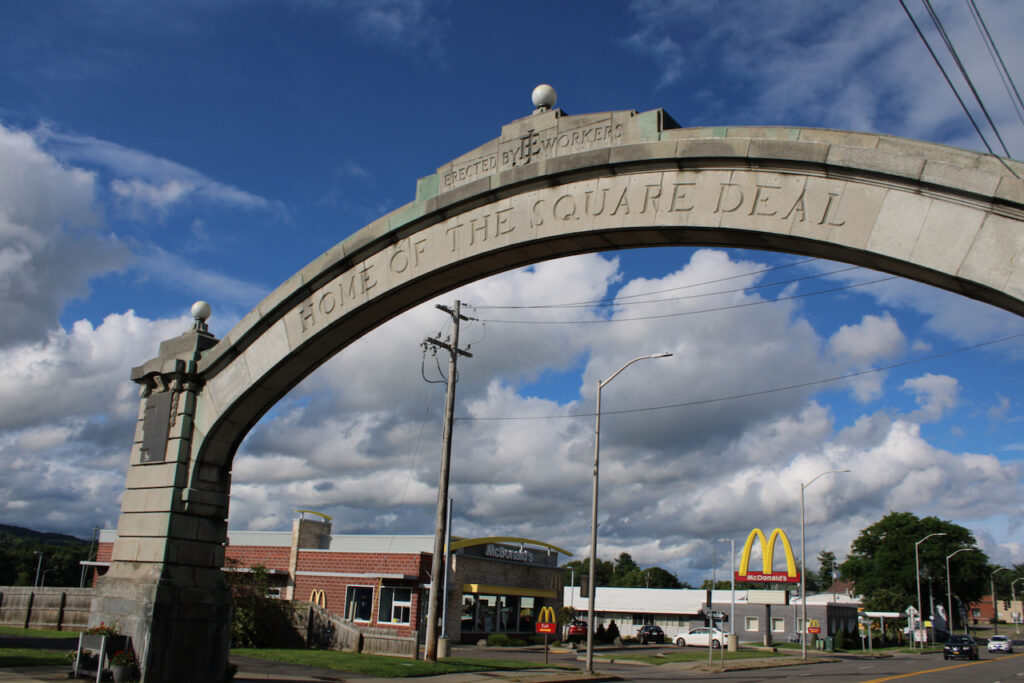
There are two arches, built in 1920, with money donated by the workers to celebrate “the square deal”. I’m skeptical. But I love the golden arches peeking out beyond this one on the Endicott border.
There was a cult of personality around Johnson that seems part charming and part… disturbing? In 1916, Johnson instituted an eight our workday, which led 25,000 employees to visit Johnson’s house personally to thank him, bringing beer, clams and a band to celebrate. There are two arches – one currently taken down for road construction – built between the cities of Binghamton, Endicott and Johnson City by workers to celebrate Johnson’s square deal.
While the profit-sharing, corporate healthcare and fair working hours are laudable, at the end of the day, Endicott Johnson paid fairly modest wages for demanding piecework, and to a large extent, the “square deal” was meant to ensure that laborers didn’t unionize. Many workers were immigrants from southern Italy and the Balkans, and while their earnings put their children through high school and sometimes college, most of the children didn’t return to the factories alongside their parents. (I explained the model of healthcare, golf and carousels to a friend who works in the Bay Area, to which she relpied, “Oh, that’s where Apple got the idea.”)
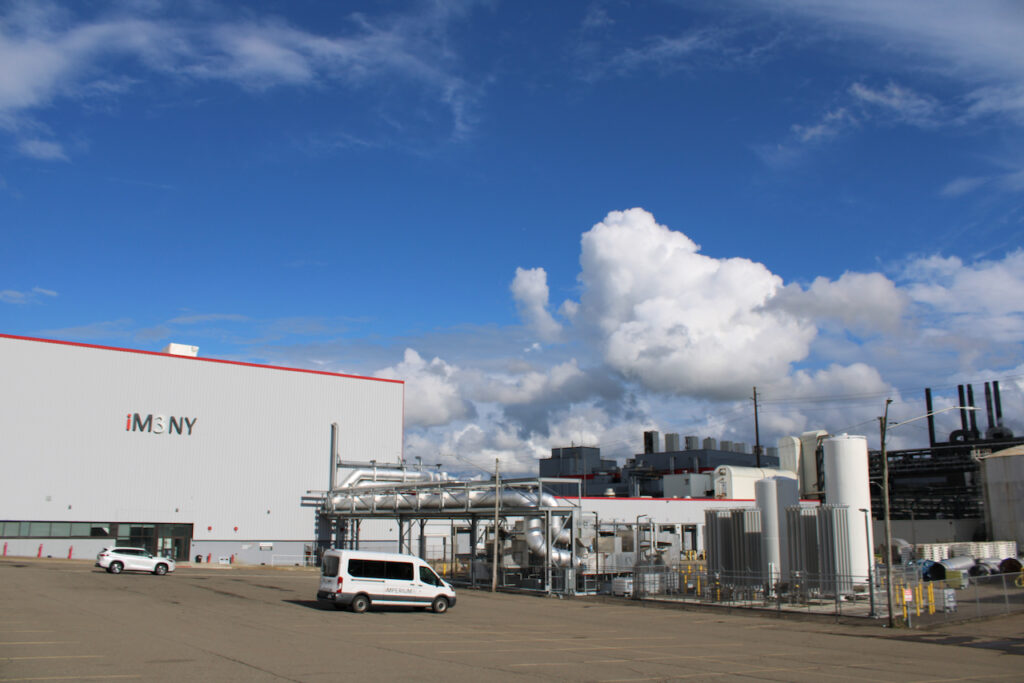
iM3ny factory, Endicott, NY
Endicott Johnson exists only as a brand of a minor shoemaker today, and most of its factories are torn down, but Bundy, absorbed into IBM, thoroughly transformed the workplace, making “Fordism” and “scientific management” possible by ensuring the presence of countless factory workers on the assembly lines. Endicott, one of the three cities hosting EJ factories, now has the iM3NY lithium battery “gigafactory”, which occupies a large part of the city, but which is having problems finding sufficient investment to scale up production.

The pinball tables at Robot City Arcade
Endicott itself seems to be where the region’s immigrant population is settling – the main street features Halal markets and Bengali restaurants, while the West Side of Binghamton itself seems like the cool place to try out a new business, like Parlor City Vegan, or the wonderful Robot City Arcade, which features historical game consoles for sale and a back room filled with pinball and arcade machines.
The city’s downtown is beautiful, blessed with architecture that’s survived the shift from sleighs and cigars to army boots, to life as a university town. There’s evidence of businesses trying and failing – a shuttered brewery, some empty storefronts – but equal evidence of success, and the overall vibe (to the extent that one can gather such things in a short visit), is a city where transformation is possible.
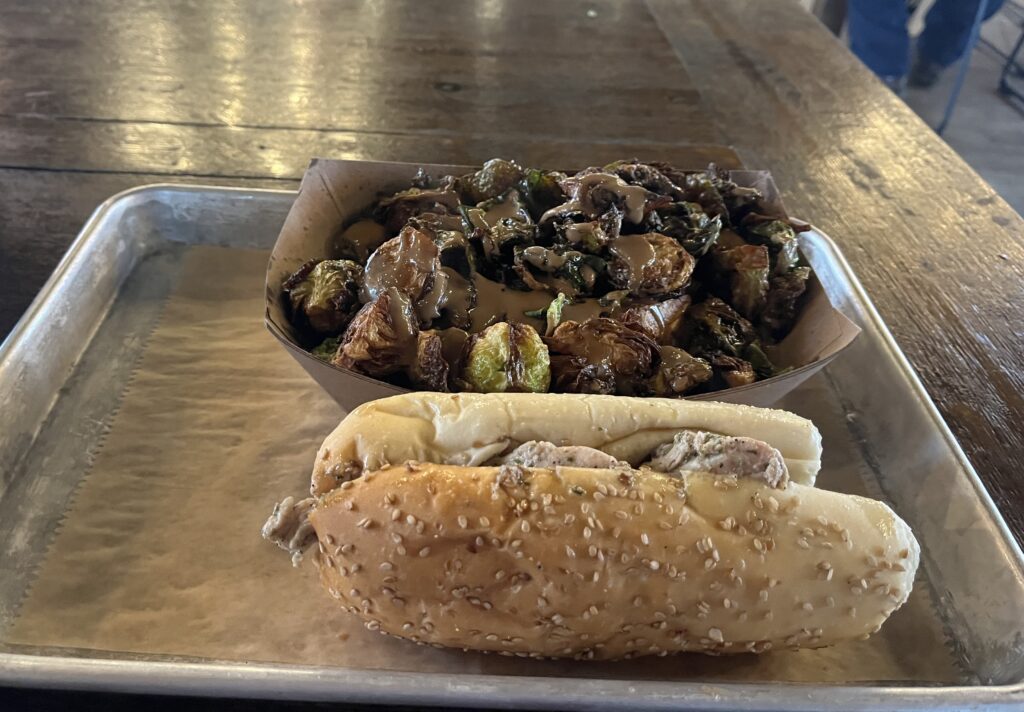
Oh, and there’s spiedies. Don’t forget to have a spiedie.
Thanks, Binghamton, I’ll be back. And thanks to the ladies who preserved a mansion in 1905, the first time the city’s economic fortunes changed, to the folks building in the wake of EJ, Bundy and IBM, and to the people making Binghamton their home today.
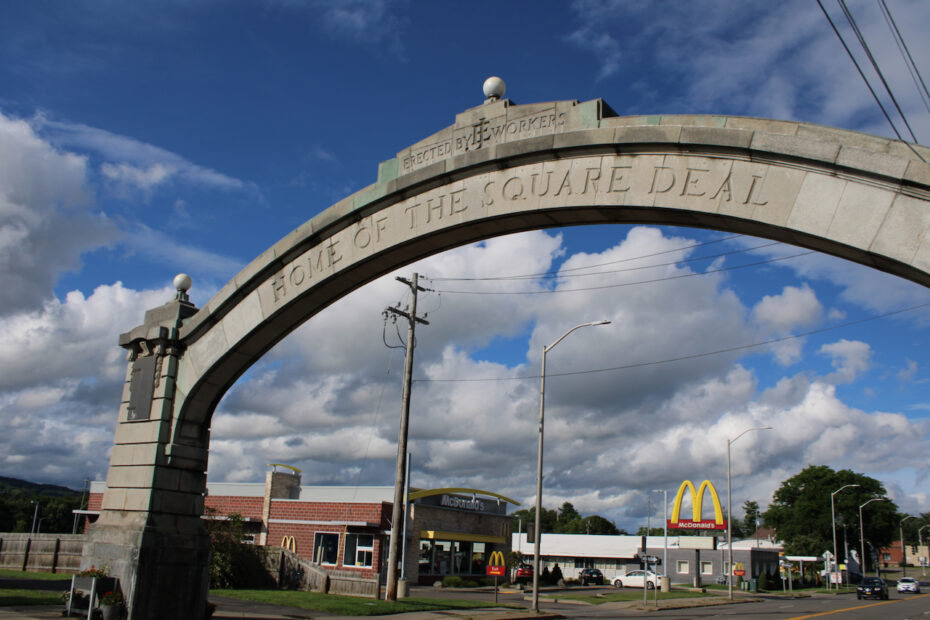
Wow. Fascinating. Thanks for taking us along with you.
Pingback: Road trip: Buried, with dignity, in Elmira - Ethan Zuckerman
Love hearing more about this area. I was born in Endicott but moved away as a baby and haven’t ever been back
You mention Italy and the Balkans, but there was a huge Eastern European population as well, including my paternal grandparents and a dizzying array of cousins. My grandfather was a foreman at an EJ factory, and my dad and his siblings grew up in an EJ house going to the EJ clinic and playing in the EJ parks. The parks were pretty run down when I was a kid, but it was still a highlight of any summer visit to Johnson City to have Grandpa take us to one of the carousels.
There are stories of the Johnsons putting people on trans-Atlantic ships to teach immigrants to say “Which way EJ?” once they cleared Ellis Island, where recruiters would put them on trains to Binghamton. When we would stay with my grandparents (generally because my parents were away; we lived 15 minutes away), on Sundays we would drive past four Catholic churches to get to the Polish Catholic church. I remember asking once why we didn’t go to one of the closer churches (“It’s the same Pope, right?”), and being told “No, that’s the SLOVAK church, we don’t go there…”
(My dad has a story about a time he got in a fight and the other kid’s dad, who was a cop, came to the house. He was in a world of trouble until said cop was about to leave and offered as a parting shot “They never should’ve let you dumb Polacks into the country in the first place…” At which point, he was no longer in trouble…)
All the way back when I was in high school, there was an influx of Laotian immigrants to the area, which led to the odd spectacle of a colorful Buddhist temple on a former farm on Route 11 just outside my hometown of Whitney Point. Here’s a story from the local paper about ten years ago: https://www.pressconnects.com/story/news/local/2015/01/11/take-look-inside-wat-lao-samakhitham-barker/21591415/
Comments are closed.